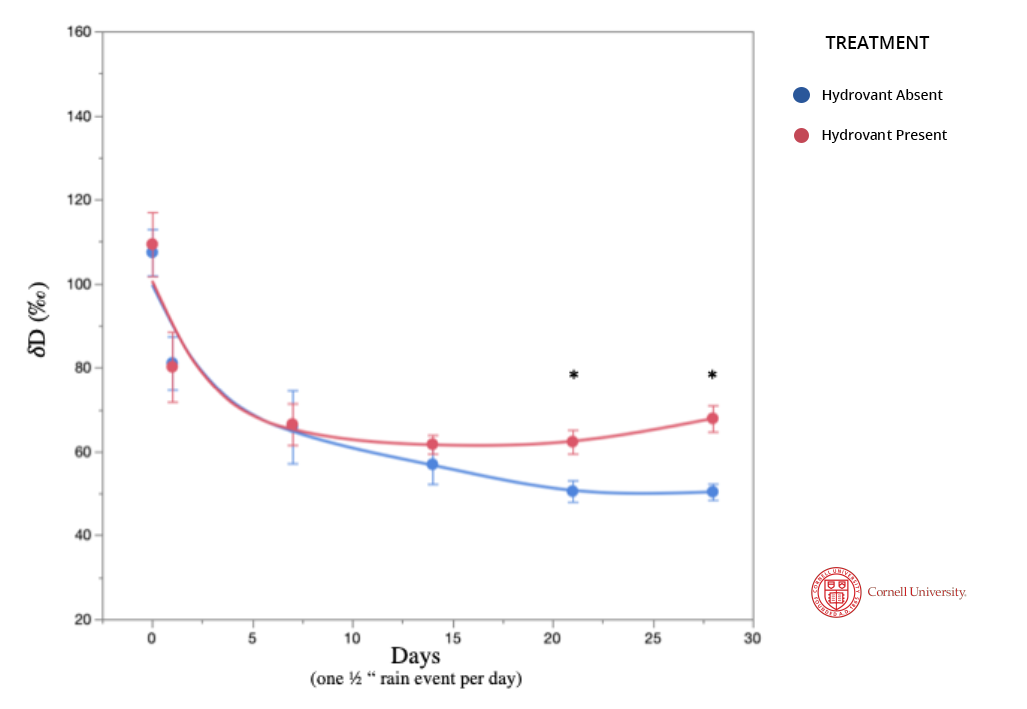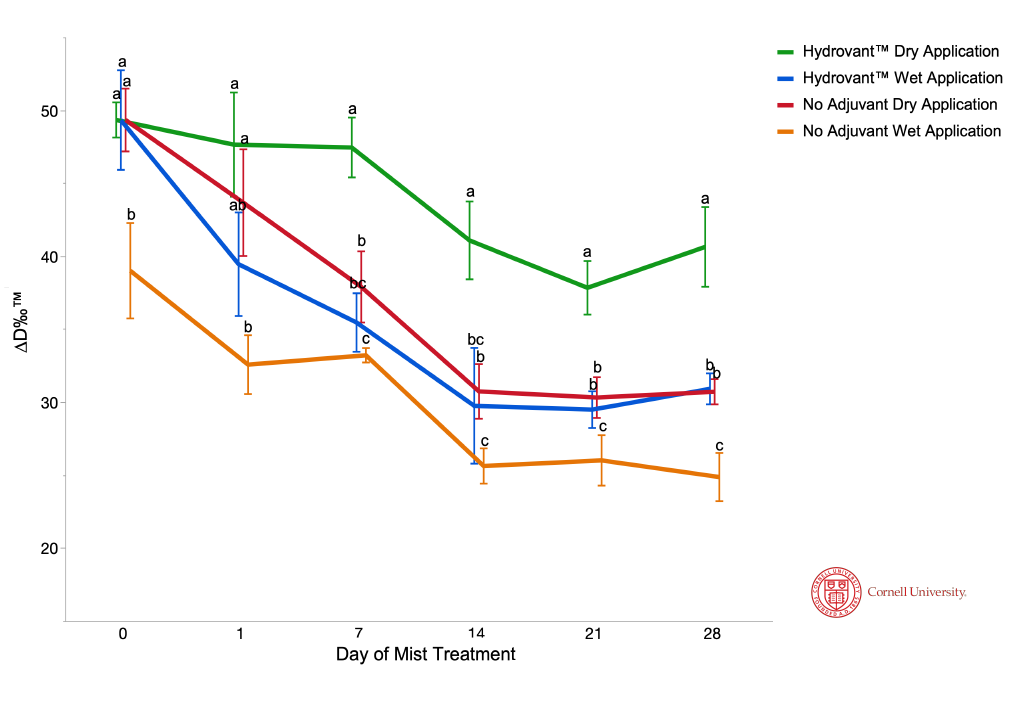
Insecticide Research
The Most Rainfast Adjuvant
HYDROVANT-fA RAINFAST REPLICATED TRIAL
Isotopically-enriched (2H) Bifenthrin plus Hydrovant
The aim of this project was to assess whether Hydrovant-fA adjuvant increases pesticide retention, when applied with Bifenthrin on leaves of corn (Zea mays), before being subject to a series of artificial rainfall events. Isotopically-enriched (2H) Bifenthrin, the active ingredient in Brigade, was applied with and without Hydrovant-fA to test the efficacy of Hydrovant-fA at a dilution of 1:1000 to persist under a daily rainfall intensity of ½ inch in 3 minutes every day for 30 days of precipitation equivalent.
Conclusion: Hydrovant-fA provided a 35% – 45% retention difference.

Ensures Efficacy When Spraying Wet Crops
HYDROVANT-fA RAINFAST REPLICATED TRIAL
Isotopically-enriched (2H) Bifenthrin plus Hydrovant
The aim of this protocol is to compare how the use of Hydrovant-fA adjuvant increases pesticide adhesion when applied onto different wet or dry leaf conditions of corn (Zea mays) at the time of application. After application, the leaves were then subjected to a series of artificial mist events to examine pesticide retention. Isotopically-enriched (2H) Bifenthrin was applied with and without Hydrovant-fA to wet and dry leaf. surfaces to compare efficacy.
Conclusion: Bifenthrin with Hydrovant applied to a wet leaf provided statistically similar pesticide adhesion to Bifenthrin alone being applied to a dry leaf during the entire duration of the experiment.

Reduced Aphids from 19 Aphids/Leaf to 4 Aphids/Leaf
HYDROVANT-fA CUCUMBER REPLICATED TRIAL
Cotton Aphid Control on Cucumber
HYDROVANT and Brigade (Bifenthrin) for Cotton Aphid control on Cucumbers in San Joaquin Valley, California. The graph shows the untreated check, the Brigade alone at the standard rate and the .1% HYDROVANT and Brigade at the standard rate.
Conclusion: 14 days of excellent control were obtained with HYDROVANT at .1% and Brigade at the standard rate. Note that Bifenthrin, a member of the Pyrethroid family, typically struggles to maintain acceptable levels of Aphid populations for more than 5 or 6 days.

